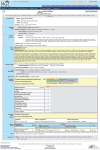The Mouse Genome Database: enhancements and updates
- PMID: 19864252
- PMCID: PMC2808942
- DOI: 10.1093/nar/gkp880
The Mouse Genome Database: enhancements and updates
Abstract
The Mouse Genome Database (MGD) is a major component of the Mouse Genome Informatics (MGI, http://www.informatics.jax.org/) database resource and serves as the primary community model organism database for the laboratory mouse. MGD is the authoritative source for mouse gene, allele and strain nomenclature and for phenotype and functional annotations of mouse genes. MGD contains comprehensive data and information related to mouse genes and their functions, standardized descriptions of mouse phenotypes, extensive integration of DNA and protein sequence data, normalized representation of genome and genome variant information including comparative data on mammalian genes. Data for MGD are obtained from diverse sources including manual curation of the biomedical literature and direct contributions from individual investigator's laboratories and major informatics resource centers, such as Ensembl, UniProt and NCBI. MGD collaborates with the bioinformatics community on the development and use of biomedical ontologies such as the Gene Ontology and the Mammalian Phenotype Ontology. Recent improvements in MGD described here includes integration of mouse gene trap allele and sequence data, integration of gene targeting information from the International Knockout Mouse Consortium, deployment of an MGI Biomart, and enhancements to our batch query capability for customized data access and retrieval.
Figures




